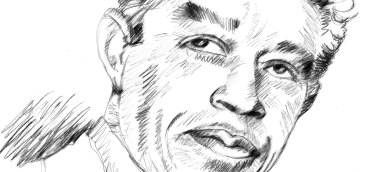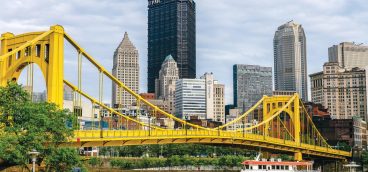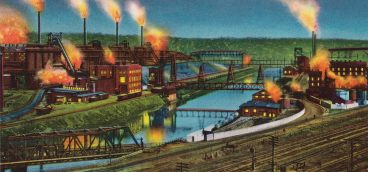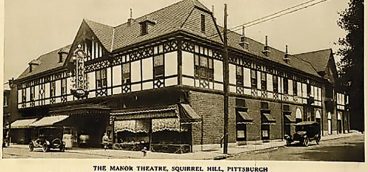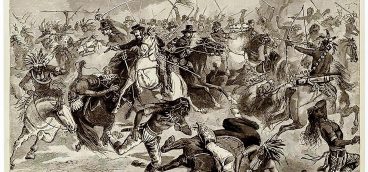Pittsburgh’s Contributions to the World
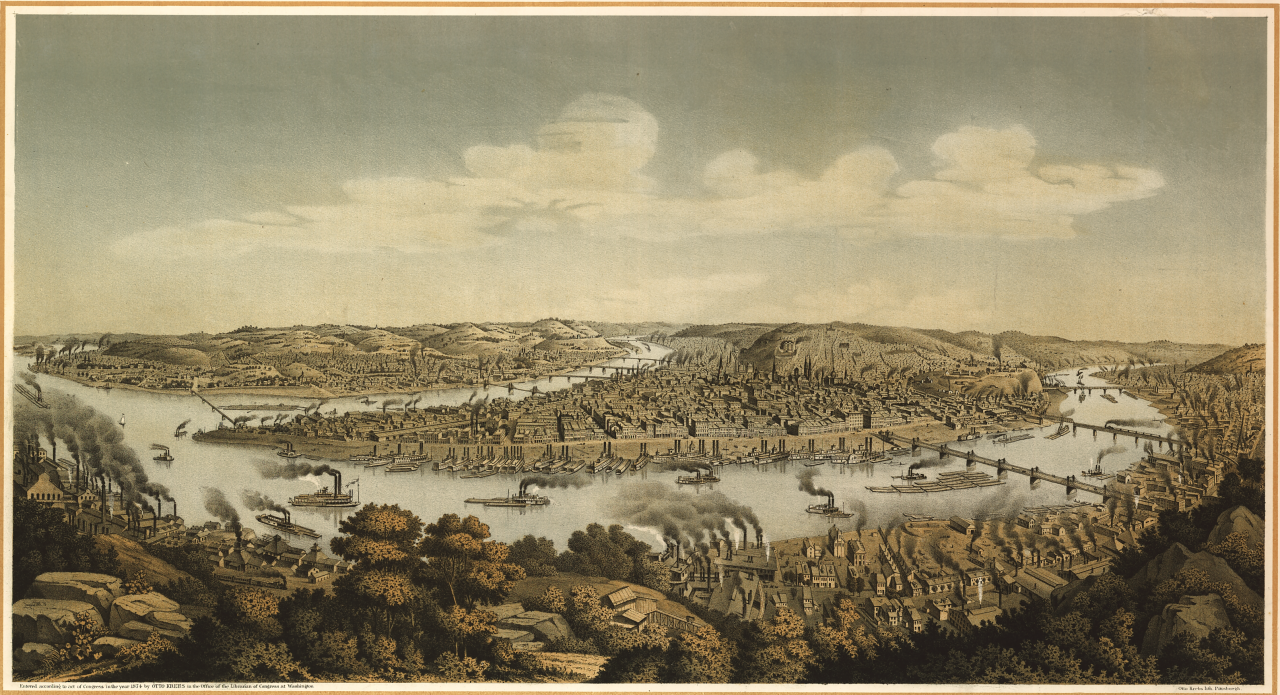
To celebrate the beginning of our 20th year, we’ve set out to catalogue the contributions that Pittsburgh and western Pennsylvania have made to the world. The list has grown and grown, and despite our best efforts, we know we’ll leave out key contributors. I think you’ll find that this small city at the confluence of three rivers has played an astonishingly outsized role in the creation of this country and the world we inhabit. So, read on, and be inspired to pick up the gauntlet and take your turn in building this great American city – Douglas Heuck
Meadowcroft Rockshelter – The Oldest Humans in America
Located in Avella, Washington County, Meadowcroft is one of the most significant archaeological and historical sites in North America. The prehistoric campsite contains evidence of human habitation dating back nearly 16,000 years, making it the oldest known site of its kind in the Americas. Its discovery in the 1950s revolutionized the understanding of early human history in the Western Hemisphere. Adjacent to the rockshelter, the Historic Village features reconstructed buildings and exhibits that showcase life in western Pennsylvania from the 16th to the 19th centuries.
Christopher Gist – Saved the father of our country (twice)
Christopher Gist was a pioneering frontiersman, surveyor, and explorer whose work played a significant role in early British efforts to claim and settle the Ohio River Valley. And he is credited with changing the course of American history by twice saving the life of a young George Washington. The first time, Gist prevented a Native American from shooting Washington with a musket that misfired, disarming the man. In the second rescue, Washington fell off a makeshift raft into the freezing Allegheny River, and Gist pulled him to safety. The two spent the night on an island in the river. The next morning, the river froze over and they were able to walk to safety. Employed by the Ohio Company of Virginia in the 1750s, Gist’s job was to survey and map vast tracts of wilderness to facilitate westward expansion. In 1753, he accompanied Washington on a critical diplomatic mission to deliver an ultimatum to the French, demanding their withdrawal from British-claimed territories.
The Seven Years’ (French and Indian) War
The French and Indian War began in western Pennsylvania. In 1754, George Washington led a group of British and Indian troops who ambushed 35 French soldiers between Hopwood and Farmington in Fayette County. It was claimed that a Native American named Tanaghrisson, also known as the Half-King, was part of Washington’s troops and killed a French officer who was in Washington’s custody. The “assassination” of the officer, Joseph Coulon de Jumonville, especially while in custody, created such outrage that it sparked what would become the Seven Years’ War. The historic site is called Jumonville Glen. Pittsburgh was the epicenter of this battle for the New World because of its strategic location. Fort Duquesne at the confluence of the Allegheny and Monongahela rivers was essential for the French because it unified their arcs of power — up from New Orleans along the Mississippi and Ohio rivers and westward from Quebec and Montreal in the East. If the French took New York, it held little value, but whoever won western Pennsylvania won control of the continent.
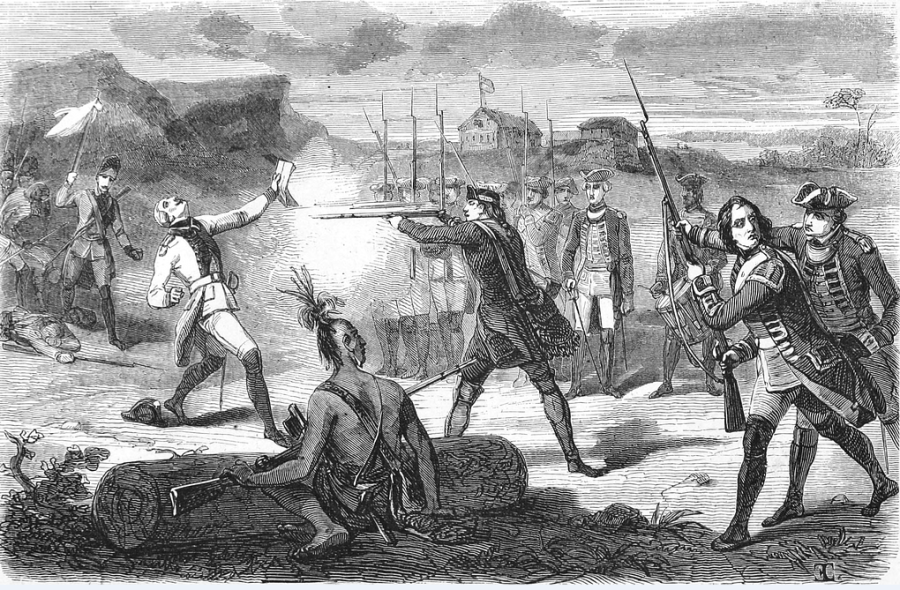
Braddock’s Expedition and the Pennsylvania Turnpike
General Edward Braddock’s 1755 expedition aimed at capturing Fort Duquesne was a key event during the early stages of the French and Indian War. Braddock’s army of British regulars and colonial militia faced immense challenges as they traversed dense wilderness. The expedition was notable for constructing a road that facilitated the movement of troops and artillery through difficult terrain. A team of 180 axmen could cut three miles a day through the forest. By the 20th century, Braddock’s route would become the Pennsylvania Turnpike, one of the first modern highway systems in the United States.
On July 9, 1755, French soldiers and their Native American allies ambushed Braddock’s forces in what became known as the Battle of the Monongahela at present-day Braddock. The British suffered a devastating defeat, and Braddock was mortally wounded. George Washington, one of Braddock’s aides and one of the few not killed, helped lead the retreat. Washington’s coat was shot through several times, but he wasn’t wounded, leading to his lifelong conviction that he was charmed in battle.
Kittanning Raid of 1756
The Kittanning Raid was a pivotal event during the French and Indian War, carried out by colonial troops under the command of Lt. Col. John Armstrong, after whom Armstrong County is named. The raid targeted the Native American settlement of Kittanning, located along the Allegheny River, which was a base for Delaware warriors allied with the French. The settlement was a staging ground for attacks on British frontier settlements, making it a strategic target for the British.
On Sept. 8, 1756, Armstrong and his men launched a surprise attack, destroying homes, supplies, and killing or capturing many inhabitants of the village. Although the raid only temporarily disrupted the Delaware forces, it was a propaganda victory. It had been unclear whether Pennsylvania could protect its western residents and hold together as a viable colony, and the raid provided the appearance that the colony could continue intact. It also provided the first opportunity for Benjamin Franklin to wield his persuasive powers and use the circumstances to his and Pennsylvania’s advantage — a skill he would develop to become a crafty diplomat who was essential to the American Revolution.
Pittsburgh: The City of Whiskey
Before it was the Iron City or the Steel City, Pittsburgh was the City of Whiskey. By the late 18th century, Pittsburgh was the center of whiskey production in the country. Distilleries were common — there were more than 4,000 here — many with a high level of quality. One well-known brand, Monongahela Rye, gained national and international recognition. Small-scale farmers and distillers in western Pennsylvania initially produced Monongahela Rye as a way to convert surplus grain into a valuable, transportable commodity. The whiskey also was a useful form of currency in barter transactions. Its success contributed significantly to the economic growth of western Pennsylvania, linking the region’s agricultural and industrial sectors.
A resurgence of this historic whiskey has occurred in recent decades. One such revival is Wigle Whiskey, a craft distillery in Pittsburgh named after Philip Wigle, a key figure in the Whiskey Rebellion. Another is Liberty Pole Distillery in Washington County, which focuses on revitalizing Monongahela Rye. Another of America’s oldest whiskey brands, Old Overholt, was first distilled in the early 19th century in West Overton, near Pittsburgh. A high-quality rye whiskey, Old Overholt became a favorite during the pre-Prohibition era and remains a staple in American distilling.
Mike Fink and Riverboat Lore
Mike Fink was a legendary frontiersman and river man who was born near Pittsburgh around 1770. Known as the “King of the Keelboatmen,” Fink became a larger-than-life figure along the Ohio and Mississippi rivers, where he transported goods and traded stories. His reputation as a sharpshooter, brawler, and humorist made him a folk hero in the early 19th century, embodying the rugged, adventurous spirit of the American frontier.
Hugh Henry Brackenridge – Laid the Foundation for Pitt
A prominent writer, lawyer, and politician, he was instrumental in founding the University of Pittsburgh in 1787, then known as the Pittsburgh Academy. Brackenridge envisioned the institution as a means to educate young men on the western frontier, promoting civic engagement and intellectual growth.
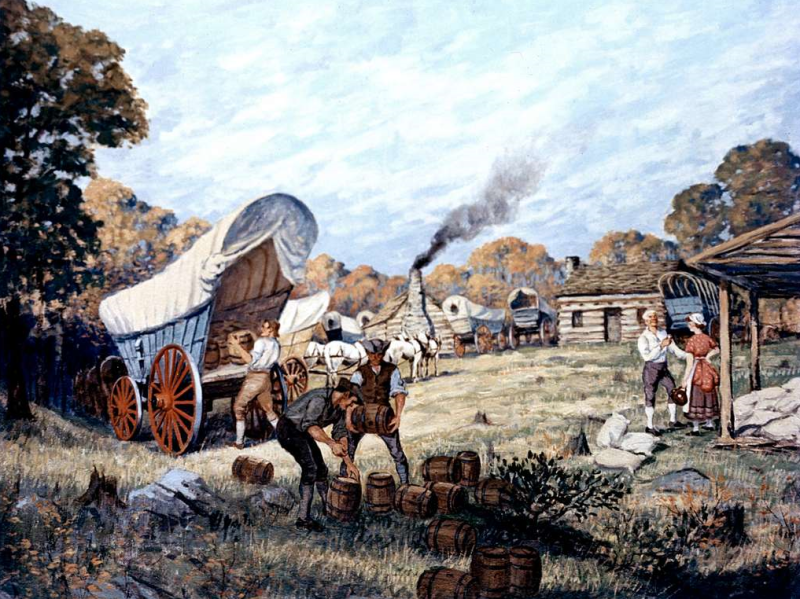
The Whiskey Rebellion – America’s First Insurrection
The Whiskey Rebellion of 1794 was driven by farmers and distillers who opposed a federal excise tax on whiskey. The tax, introduced by Alexander Hamilton, was part of a plan to reduce national debt and establish the taxing authority of the new country. The tax disproportionately affected small-scale producers in frontier regions — especially Pittsburgh, where whiskey was not only a burgeoning industry but often used as currency. Another of Hamilton’s goals was to reduce the number of distillers and concentrate production into fewer hands, thereby creating a more viable export product.
Resistance quickly escalated into a broader protest against perceived government overreach. The rebellion reached its peak when armed groups attacked tax collectors and government officials — including tarring and feathering a revenue collector — prompting President George Washington to respond decisively. Washington federalized a militia of 13,000 troops and personally led them into western Pennsylvania. The show of force ended the rebellion without major conflict, demonstrating the federal government’s authority under the new Constitution.
Launching the Lewis and Clark Expedition
A defining moment in American history began in Pittsburgh when Meriwether Lewis oversaw the building of the boat that would take him and William Clark on an expedition to explore the American West. The expedition’s 55-foot keelboat was built along the Monongahela River and served as the primary vessel for the journey.
Albert Gallatin – America’s Fourth Treasury Secretary
The Swiss-American politician, financier, and diplomat settled in Fayette County, where he established a successful career in politics and public service. As Secretary of the Treasury under Presidents Thomas Jefferson and James Madison, Gallatin played a key role in stabilizing the young nation’s finances and reducing the national debt. He was a strong advocate for westward expansion and infrastructure development, including construction of the National Road.
Johnny Appleseed
John Chapman, born in 1774 in Massachusetts, was a pioneer nurseryman and folk hero known for planting apple orchards across the American frontier. During his first trip west, he stopped in Pittsburgh and bought a small piece of land and built a cabin on what was known as Grant’s Hill, the site of today’s Grant Street, Downtown. There, he was hired to tend a local apple orchard, and he created his plan to establish apple nurseries throughout the Ohio country — with seeds from that Pittsburgh orchard. For 40 years, he did just that, traveling by canoe or Indian path, returning to Pittsburgh for seeds and then continuing. He became a legendary and beloved figure, a devout Christian who loved animals and sought to live for others, by bringing apples to the frontier.
The Pittsburgh Post-Gazette – The Oldest Newspaper West of the Alleghenies
The city’s oldest and most widely read newspaper, the “PG” traces its origins to 1786 as the Pittsburgh Gazette. Over the centuries, “the oldest newspaper west of the Alleghenies” has chronicled Pittsburgh’s evolution from a frontier town to an industrial powerhouse and hub for technology and education, winning six Pulitzers along the way. The PG has acquired or absorbed other Pittsburgh dailies for more than a century — The Pittsburgh Sun, The Pittsburgh Post, The Pittsburgh Times, The Pittsburgh Telegraph, The Pittsburgh Sun-Telegraph and The Pittsburgh Press. For 99 years, the Block family has published the PG, and for more than a decade has subsidized economic losses and kept a larger editorial staff than most similar-sized cities to keep quality journalism in Pittsburgh.
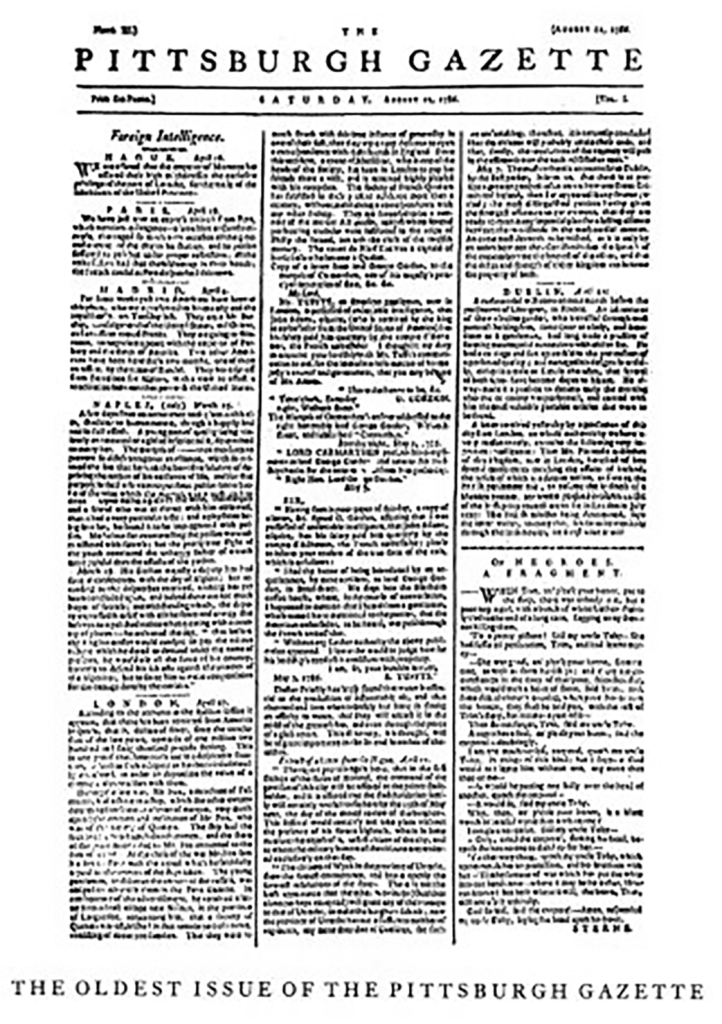
Robert Fulton – The First Steamboat
In 1811, in Pittsburgh, Fulton built the steamboat New Orleans which was the first to travel down the Ohio and Mississippi rivers to New Orleans, Louisiana.
The Iron City
In 1792, George Anschutz built Pittsburgh’s first iron foundry in present-day Lawrenceville, when he learned of an iron ore deposit nearby. By the early 1800s, the number of forges had grown significantly, and Pittsburgh’s contribution to the world was as “The Iron City” or “The Birmingham of America.”
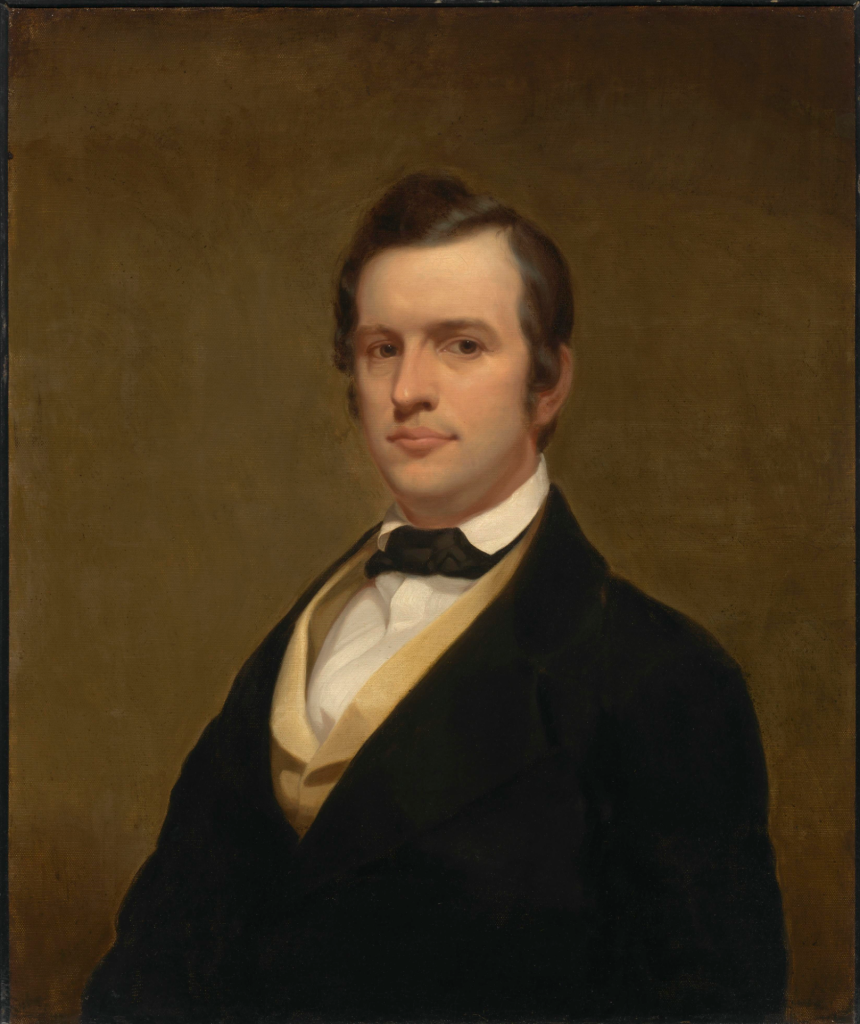
Stephen Foster – The Father of American Music
Foster was born in 1826 Lawrenceville, now a Pittsburgh neighborhood. He wrote some of the most enduring songs in American history, including “Oh! Susanna,” “Camptown Races,” “Swanee River,” and “My Old Kentucky Home.” His songs combined elements of folk, classical and minstrel music, creating a unique style that captured the spirit of 19th-century America. His understanding of melody and sentiment made his work universally appealing. Foster’s compositions have been performed and adapted countless times, remaining staples of American culture.
Samuel Kier – Built America’s First Oil Refinery
A Pittsburgh-based entrepreneur in the mid-19th century, Kier established the first oil refinery in the country in 1853 in Downtown Pittsburgh at the corner of Seventh Avenue and Grant Street. He is credited with the development of kerosene as a fuel source. He initially found the oily substance an annoyance, but after noticing it was flammable, realized it could be harnessed as a reliable source of lamp fuel for homes and businesses.
William Larimer Jr. – Founder of Denver
Born in Westmoreland County, “General” Larimer made his fortune in the Pittsburgh railroad industry and became a land speculator in the West. In 1858, he founded the Denver City Land Company, intending to create a city. His daughter Rachel Larimer married James Ross Mellon (brother of Andrew Mellon) and the couple’s son, William Larimer Mellon, later co-founded Gulf Oil.
Jane Grey Swisshelm – Abolitionist and Women’s Rights Champion
Swisshelm was a pioneering journalist, abolitionist, and women’s rights advocate born in Pittsburgh in 1815. One of the first female editors and publishers in the U.S., she used her platform to champion social justice causes. Her newspaper, the Saturday Visitor, was a voice for abolishing slavery and advancing women’s rights. Her fearless reporting and bold opinions often put her at odds with powerful figures. She worked to support the Union cause during the Civil War and fought for equal rights for African Americans and women.


